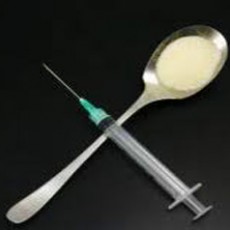Teen Heroin Use
 Heroin is one of the most highly addictive and dangerous drugs on the planet. While teens don’t account for a large percentage of heroin users, teen heroin use is on the rise. Currently, the U.S. Department of Health and Human Service estimates that there are over one million heroin users in the United States alone. While teen heroin use represents fewer than 10% of the total heroin use in the country, almost 30% of teens have reasonable access to heroin and say that it is easy to maintain.
Heroin is one of the most highly addictive and dangerous drugs on the planet. While teens don’t account for a large percentage of heroin users, teen heroin use is on the rise. Currently, the U.S. Department of Health and Human Service estimates that there are over one million heroin users in the United States alone. While teen heroin use represents fewer than 10% of the total heroin use in the country, almost 30% of teens have reasonable access to heroin and say that it is easy to maintain.
What is Heroin?
Heroin is a highly addictive, rapid acting opiate that is synthetically derived from opium. Opium is a naturally occurring substance that is extracted from the Asian opium poppy plant. Heroin is normally sold in a white, to slightly off white powder form, with the purer the heroin the whiter the color. Variations in color represent the presence of impurities in the heroin, and can even be brown to blackish in color. Most street heroin is impure and “cut” with other types of drugs or substances to increase the street value including sugar, starch, powdered milk, or quinine. Street heroin can also be cut with bleach, strychnine or other poisons which can be very lethal.
History of Heroin in the United States
Heroin addiction in the United States started in the late 1800’s in the midst of a wide-spread morphine epidemic. This was mainly due to the high exposure to morphine during America’s Civil War. Because of the sheer carnage of the Civil War, morphine was widely used by both sides as an effective pain killer and pain suppressant. However, after the Civil War ended tens of thousands of Northern and Confederate soldiers were already addicted to the drug and needed some sort of treatment to fight this addiction.
The answer supposedly came in 1874 with a new wonder drug invented in Germany called Heroin. Heroin was imported to the United States shortly after it was invented and was marketed as a safe and non-addictive substitute for morphine. Heroin was even marketed in products to cure all types of physical and mental ailments ranging from alcohol withdrawal to depression, sluggishness, colds, cancer, even old age. However, as many people unfortunately came to realize, that heroin is not only addictive, but is in fact more addictive than morphine, and more dangerous. But by then it was too late. The heroin market in America was born and still persists to this day.
Effects of Heroin
Heroin has powerful effects on the central nervous system, the brain, and overall immune system. Heroin provides the fastest and most powerful high when taken intravenously, which only takes about 8 seconds after an injection to feel the full effects. However, because taking heroin intravenously provides the most powerful high, it can also put the person at a higher risk for overdose and is the most dangerous way to administer the drug. Depending on the body’s reaction, it can be easy to overdose the first time, or damage veins and blood vessels in the body.
Long-term effects of heroin can be just as damaging including:
- Addiction
- Dependence
- Collapsed Veins
- Liver diseases
- Lung problems
- Destruction of brain cells
- Diseases from needle sharing
- Infections in the lining of the heart
- Abscesses






